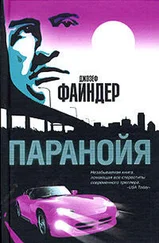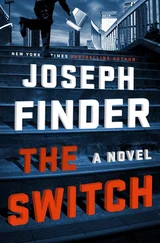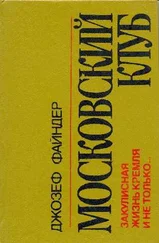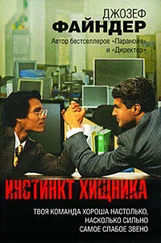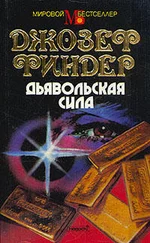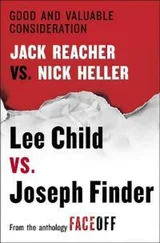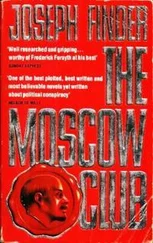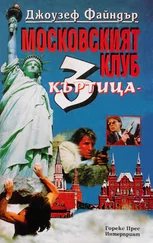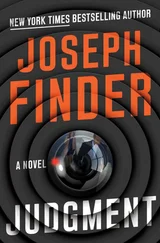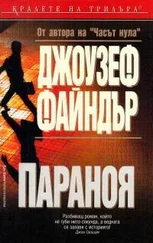He shook his head, turned away, went back to changing the register tape. “I know nothing about this.”
Right, I thought. He’s afraid he’ll somehow get ensnared in a crime that had nothing to do with him, just because it took place on his property. Was the ATM in fact on his property? The ATM belonged to Wachovia Bank. The brick wall was the side of the old car-barn building and probably belonged to Georgetown University, which was the big landlord around here. So why did he have his own surveillance camera pointed in that direction?
The graffiti, I guessed. Kids with cans of spray paint, defacing the wall he looked at every day. Probably made his already high blood pressure shoot up to dangerous levels.
“The cops won’t do a damned thing,” I said. “They can’t be bothered.”
He grunted, fiddled with the register-tape roll, pushed it into its slot.
“Know what they said?” I went on. “They said forget it. They couldn’t care less. There’s a damned crime wave in this city, and the police just sit there on their fat asses.”
He shook his head, and his scowl deepened. He closed the cash-register-tape compartment and looked up. “It’s a disgrace,” he agreed.
A man who installed such an elaborate security system was not someone who had a great deal of faith in law enforcement. He was also a guy with a lot of pent-up resentment.
He was putty in my hands.
“These thugs just run wild around here,” I said. “Do whatever the hell they want. They know they’ll get away with it. Like all that graffiti on the wall over there.”
Some little sprocket of anger clicked into place in the guy’s head. He looked up at me. “These vandals – they call themselves ‘taggers,’ and they call this vandalism ‘art.’ And the police, they tell me if they have no documentation, they can do nothing. So I put in cameras.”
“It didn’t stop them, huh?”
“No! Nothing! One of the police even told me this is freedom of expression, this ‘tagging’!” He folded his arms.
“Easy for them to say. They don’t have to live with it.”
“It is an outrage!”
“But it looks like a terrific surveillance system you’ve put in. High-res, infrared–”
“–Yet it does me no good! None! Thousands of dollars, and these taggers are still doing their ‘art’!”
“Gosh, wouldn’t it be great if your system got some video of my mugging, couple of days ago? Hell, might even be the same guys who keep writing on your wall. Let’s see the cops try to wriggle out of that, huh?”
He looked at me, his eyes narrowing.
“Do you know how to operate a digital recorder?” he asked. “I have to stay behind the counter.”
MR. YOUNIS KEPT his security equipment in a locked supply closet next to a shelf of beer. On a wire shelf was a low-end digital recorder, eight-channel, a black oblong box. The video images were stored on a computer hard drive. On top of the DVR was a cheap fourteen-inch color monitor. He showed me how to search by date and time, and he returned to his Plexiglas booth to wait on a couple of college kids who wanted to buy a pack of Marlboros and a case of Budweiser.
The supply closet was shallow, so I stood half-in, half-out. It took me five minutes to locate the night I wanted. I pushed PLAY. The recorder was set to take one picture every two seconds until it detected motion, at which point it kicked the recording speed up to a full thirty frames per second. Cars entered the frame and turned and backed up. People walked up to the ATM, alone or in couples, a few groups of three, their movements jerky, then suddenly smooth. I fast-scanned until I reached 11:00 P.M.
At 11:06, a white panel van entered the frame, nosed in against the brick wall a few yards to the left of the cash machine. A bulky guy in a hooded gray sweatshirt got out of the driver’s side, slammed the door, then walked around the back of the van to the passenger’s side. It was hard to tell for sure, but it looked like he had a gun in his left hand. When the guy turned slightly, I was able to catch a glimpse of his profile: beefy face, mustache. Late thirties or early forties. With his right hand, he unlocked the front passenger door. He pocketed the keys, switched the gun to his right hand, then pulled the door open.
And Roger stepped out.
The hooded guy raised his gun a little, waved it back and forth. Roger nodded. He looked panicked. His tie was out of place, his suit rumpled.
The guy in the hooded sweatshirt grabbed Roger with his left hand, and the two of them looped around the back of the van. They stood there for a few seconds.
“Dude.”
I looked up. A kid with tattoos and a silver barbell through his nasal septum was standing there.
“Zig-Zags,” he said.
“What about it?” He also had huge silver plugs, easily half an inch in diameter, through his earlobes. I wondered what this kid would look like at age seventy with big droopy holes in his ears and nose.
“Like, where the hell are the rolling papers?”
“Yeah,” I said with a glare, “like I know.”
He hurried away.
I turned back to the monitor. The beefy guy in the hooded sweatshirt said something to Roger, then turned around, and I got a full-on look at his face.
No one I recognized, but he was a type-Neanderthal forehead, deep eye sockets, simian features. He could have been any one of a dozen guys I trained with in Special Forces and who washed out before the end. One of those blank-faced muscle-bound cretins who think they’re tougher and smarter than they really are and usually end up working as mall cops.
I paused the video and zoomed in until I had a good screen capture of his face, then I cut and pasted the image. Not bad for a computer illiterate. When I returned to the normal view, I moved the cursor over until the rear of the van was in the center of the screen. A Ford Econoline E-350 Super Duty van, fairly new. The kind you see everywhere.
I zoomed in closer and got another screen capture.
The abductor had been careful to hide his face from the ATM camera. But not being all that bright, he hadn’t counted on another surveillance camera grabbing a very clear picture of his face.
Or the license plate of the van he was driving.
I suppose I could have asked someone at Stoddard Associates to run the plates for me, but I knew that Virginia’s motor-vehicle records weren’t online – some ridiculous state law – and I didn’t want to call in any favors at work that I didn’t have to. Not with Stoddard keeping an eye on what I was doing.
But Arthur Garvin was only too happy to run a trace: This was a serious break on a case that had been confounding him. As I walked back to my car, I read off the number and told him that as soon as I got back to the office, I’d e-mail him some of the video-frame captures of the thug who’d grabbed Roger. He warned me it might take him a day or two, but he promised he’d get the information for me.
My cell phone gave off four beeps, and, as I stood next to the Defender, I checked the text message. Another location report from the GPS tracker in the FedEx envelope.
By then it was in Falls Church, Virginia. About six or seven miles from the drop site in Arlington. An address on Leesburg Pike.
That meant that the package had been moved. Someone had picked it up and was delivering it somewhere else.
I found myself juggling the cell phone and the BlackBerry, which I never liked using as a cell phone, and the DVD copy of Mr. Younis’s surveillance tape, in an old cracked CD jewel case he had lying around. I arrayed them before me on the hood of the Defender, my mobile office.
When I clicked on Google Earth and zoomed in on the flashing red dot on my BlackBerry screen, I could see it was some big V-shaped office building.
Читать дальше

